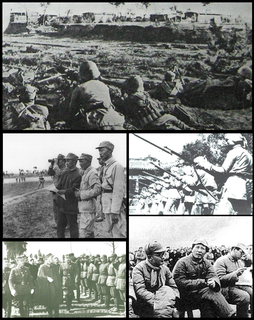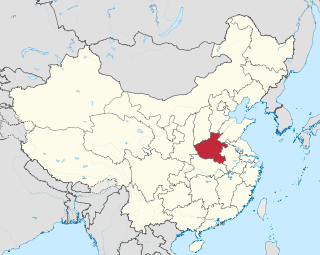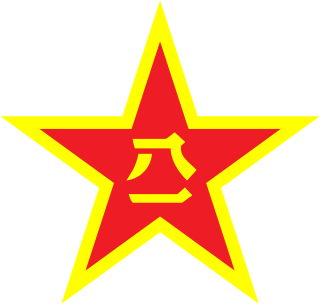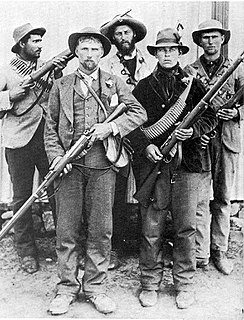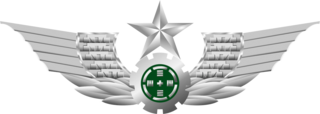| People's Liberation Army Air Force Airborne Corps 中国人民解放军空降兵军 Zhōngguó Rénmín Jiěfàngjūn Kōngjiàngbīng Jūn | |
|---|---|
| Active | 1961–present |
| Country | |
| Allegiance | |
| Branch | |
| Type | Airborne forces, air force infantry |
| Size | 30,000 personnel |
| Garrison/HQ | Xiaogan, Hubei |
| Engagements | Korean War |
The People's Liberation Army Air Force Airborne Corps (simplified Chinese :中国人民解放军空降兵军; traditional Chinese :中國人民解放軍空降兵軍; pinyin :Zhōngguó Rénmín Jiěfàngjūn kKōngjiàngbīng Jūn; literally: "Chinese People's Liberation Army Airborne Corps [2] ") is a corps directly under the People's Liberation Army Air Force (PLAAF) headquarters. It was reorganized and renamed from the 15th Airborne Corps in May 2017 [3] and now comprises six airborne brigades and a special operations brigade. The PLAAF Airborne Corps is China's primary strategic airborne unit and part of the newly formed rapid reaction units (RRUs)[ citation needed ] of the Chinese military which is primarily designated for airborne and special operation missions. Its role is similar to that of the U.S. Army's XVIII Airborne Corps/82nd Airborne Division.

Simplified Chinese characters are standardized Chinese characters prescribed in the Table of General Standard Chinese Characters for use in mainland China. Along with traditional Chinese characters, they are one of the two standard character sets of the contemporary Chinese written language. The government of the People's Republic of China in mainland China has promoted them for use in printing since the 1950s and 1960s to encourage literacy. They are officially used in the People's Republic of China and Singapore.

Traditional Chinese characters are Chinese characters in any character set that does not contain newly created characters or character substitutions performed after 1946. They are most commonly the characters in the standardized character sets of Taiwan, of Hong Kong and Macau, and in the Kangxi Dictionary. The modern shapes of traditional Chinese characters first appeared with the emergence of the clerical script during the Han Dynasty, and have been more or less stable since the 5th century.
Hanyu Pinyin, often abbreviated to pinyin, is the official romanization system for Standard Chinese in mainland China and to some extent in Taiwan. It is often used to teach Standard Mandarin Chinese, which is normally written using Chinese characters. The system includes four diacritics denoting tones. Pinyin without tone marks is used to spell Chinese names and words in languages written with the Latin alphabet, and also in certain computer input methods to enter Chinese characters.
Contents
Only one of the PLAAF Airborne Corps' former three divisions (or just 2 to 3 of the current 7 brigades) can deploy to any part of China within 48 hours due to limited airlift capabilities. In the late 1990s the airlift capability of the PLAAF consisted of 10 IL-76 heavy lift, Yu-8, and Yu-7 transports, as well as Mi-17, Mi-8, Z-8, and Z-9 helicopters. As such, the PLAAF could only lift one division of 11,000 men complemented with light tanks and self-propelled artillery. In 1988, there were reports claiming that a 10,000 man airborne division was transported to Tibet in less than 48 hours.

The Mil Mi-17 is a Soviet/Russian helicopter in production at two factories in Kazan and Ulan-Ude. It is known as the Mi-8M series in Russian service. It is a medium twin-turbine transport helicopter. There are also armed gunship versions.

The Mil Mi-8 is a medium twin-turbine helicopter, originally designed by the Soviet Union, and now produced by Russia. In addition to its most common role as a transport helicopter, the Mi-8 is also used as an airborne command post, armed gunship, and reconnaissance platform. Along with the related, more powerful Mil Mi-17, the Mi-8 is among the world's most-produced helicopters, used by over 50 countries. As of 2015, it is the third most common operational military aircraft in the world.

The Harbin Z-9 is a Chinese military utility helicopter with civilian variants. It is a licensed variant of the French Eurocopter AS365 Dauphin, and is manufactured by Harbin Aircraft Manufacturing Corporation.


